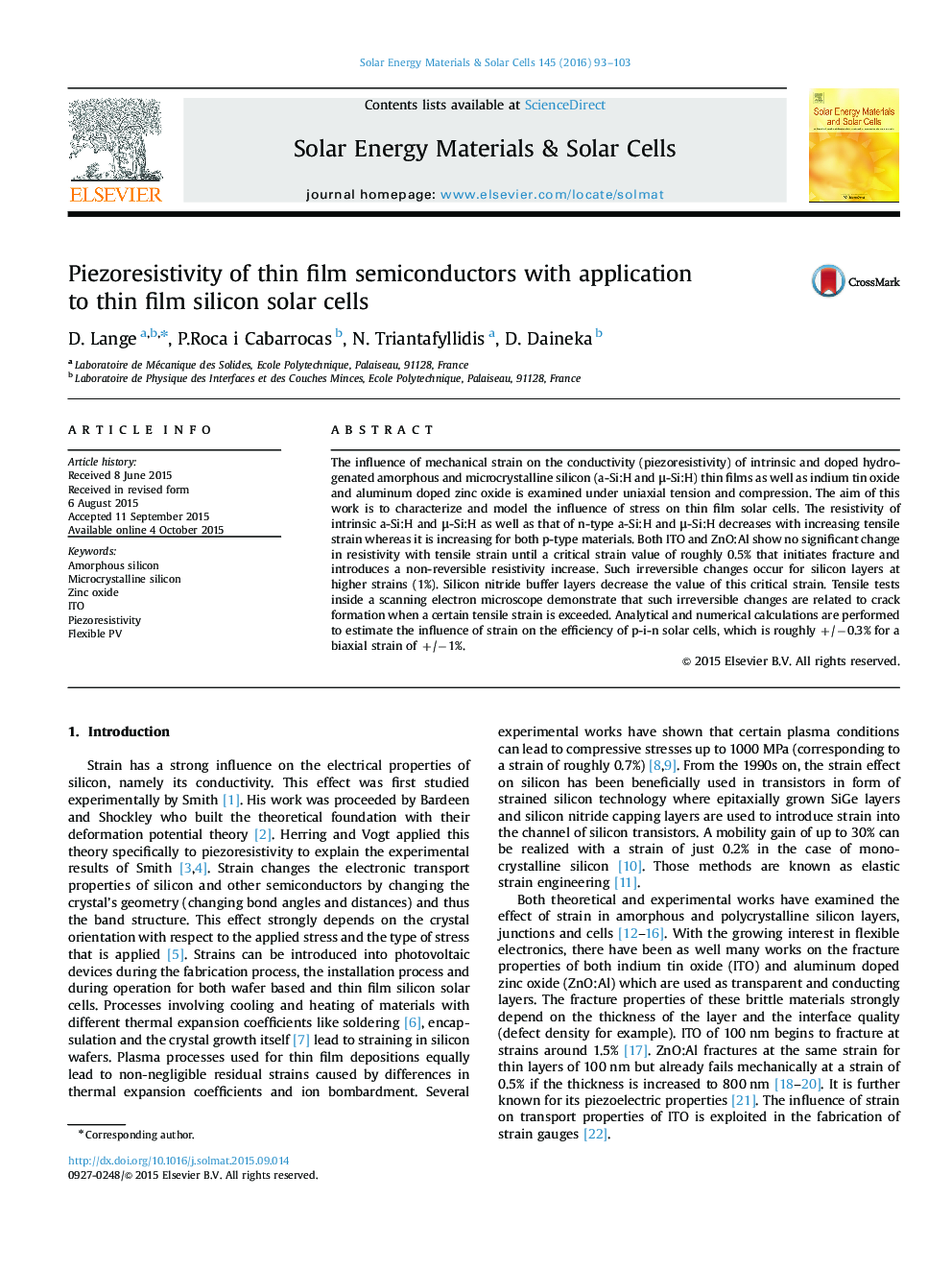| Article ID | Journal | Published Year | Pages | File Type |
|---|---|---|---|---|
| 77659 | Solar Energy Materials and Solar Cells | 2016 | 11 Pages |
•Transverse and longitudinal gauge factors for a-Si:H and µ-Si:H materials.•Fracture behavior of ITO, ZnO:Al, a-Si:H and µ-Si:H materials.•Tensile tests inside an electron microscope.•Cyclic testing of n-type µ-Si:H.•Estimation of mechanical strain influence on J(V) behavior of p-i-n solar cell.
The influence of mechanical strain on the conductivity (piezoresistivity) of intrinsic and doped hydrogenated amorphous and microcrystalline silicon (a-Si:H and μ-Si:H) thin films as well as indium tin oxide and aluminum doped zinc oxide is examined under uniaxial tension and compression. The aim of this work is to characterize and model the influence of stress on thin film solar cells. The resistivity of intrinsic a-Si:H and μ-Si:H as well as that of n-type a-Si:H and μ-Si:H decreases with increasing tensile strain whereas it is increasing for both p-type materials. Both ITO and ZnO:Al show no significant change in resistivity with tensile strain until a critical strain value of roughly 0.5% that initiates fracture and introduces a non-reversible resistivity increase. Such irreversible changes occur for silicon layers at higher strains (1%). Silicon nitride buffer layers decrease the value of this critical strain. Tensile tests inside a scanning electron microscope demonstrate that such irreversible changes are related to crack formation when a certain tensile strain is exceeded. Analytical and numerical calculations are performed to estimate the influence of strain on the efficiency of p-i-n solar cells, which is roughly +/−0.3% for a biaxial strain of +/−1%.
